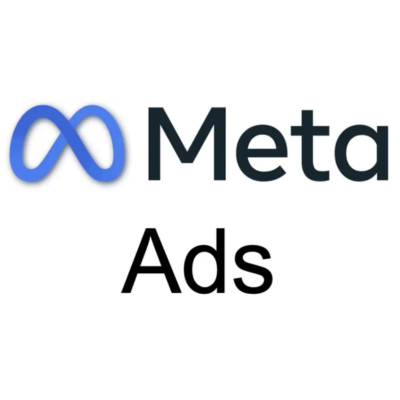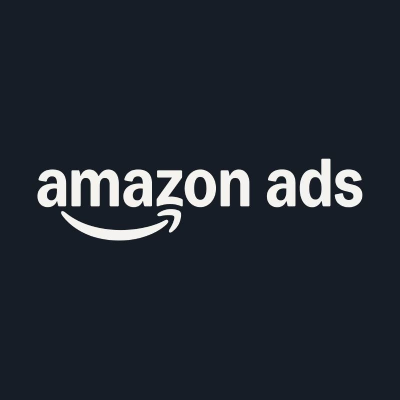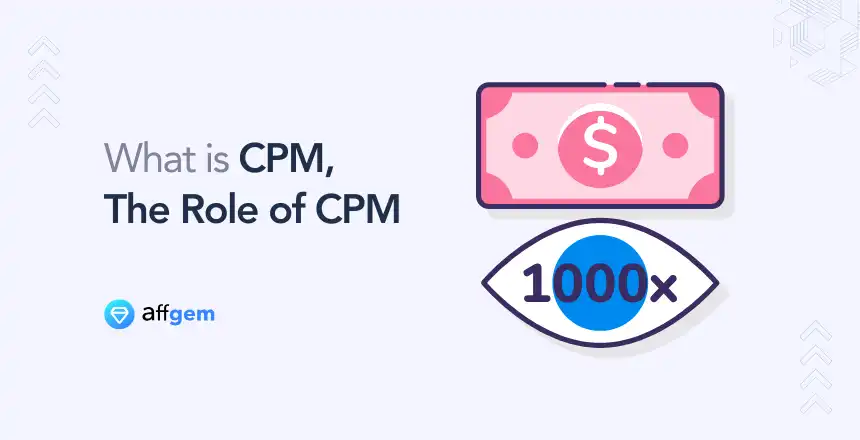Running ads costs money, and it’s not always clear if you’re spending it the right way. If you focus only on clicks or conversions, you might miss out on reaching a bigger audience. But what if your main goal is just to get more people to see your brand and remember it?
Spending money on ads but not getting enough traffic or sales can be frustrating. Your brand stays hidden because not enough people even see your ad. If your ads only charge you for clicks, you could be missing a better way to reach more people.
CPM lets you pay for ads based on how many times they are seen. Instead of paying per click, you pay for every 1,000 times your ad is shown. This makes CPM a great choice for brand awareness because more people will see your business, even if they don’t click right away. If you want more visibility and a bigger reach, CPM is a smart way to advertise.
In this article, we’ll go over last year’s CPM rates, the pros and cons of CPM, and how it compares to other ad pricing models. This will help you decide if CPM is the right choice for your advertising strategy.
What is CPM?

CPM stands for Cost Per Mille, which means the cost per 1,000 ad views. In simple words, it tells you how much an advertiser pays for every 1,000 times an ad is shown on a website, app, or social media platform.
CPM rates can vary significantly based on factors such as industry, ad format, platform, and geographic location. Below are some notable CPM statistics:
Average CPM Rates by Industry (2024)
| Industry | Average CPM |
|---|---|
| Technology | $6.40 |
| Fitness | $3.85 |
| Business Services | $3.75 |
| Home Improvement | $3.70 |
| Legal | $3.65 |
| Consumer Services | $3.60 |
| Automotive | $3.55 |
| Travel & Hospitality | $3.50 |
| Real Estate | $3.45 |
| Education | $3.40 |
| Health & Medical | $3.35 |
| Finance & Insurance | $3.30 |
| Arts & Entertainment | $3.25 |
| Restaurants | $3.20 |
| Pets & Animals | $3.15 |
| Sports | $3.10 |
| Hobbies & Interests | $3.05 |
| Beauty & Personal Care | $3.00 |
| Family & Parenting | $2.95 |
| Food & Drink | $2.90 |
| Careers | $2.85 |
| Telecommunications | $2.80 |
| Shopping | $2.75 |
| News & Politics | $2.70 |
| Jobs & Education | $2.65 |
| Reference | $2.60 |
| Computers & Electronics | $2.55 |
| Games | $2.50 |
| Society | $2.45 |
| Books & Literature | $2.40 |
| Sensitive Subjects | $2.35 |
| Science | $2.30 |
| Engineering & Construction | $2.25 |
| Farming | $2.20 |
| Manufacturing | $2.15 |
| Utilities | $2.10 |
| Industrial Services | $2.05 |
| Wholesale | $2.00 |
| Government | $1.95 |
| Non-Profit & Activism | $1.90 |
| Unclassified | $1.85 |
How CPM Works in Advertising

CPM (Cost Per Mille) is a way advertisers pay for ads based on 1,000 views. It is mostly used in display ads, social media ads, and video ads. Here’s how it works step by step:
1. Advertiser Buys Ad Space
A business or brand wants to promote its product. They go to an ad network like Google Ads, Facebook Ads, or YouTube Ads and set up a campaign.
2. Advertiser Sets a Budget
The advertiser decides how much they are willing to spend for every 1,000 times their ad is shown. This is the CPM rate. For example, if they choose $5 CPM, they will pay $5 for every 1,000 views of the ad.
3. Ad is Shown to Users
Once the campaign starts, the ad appears on websites, social media feeds, apps, or videos. Each time the ad loads on a user’s screen, it counts as an impression.
4. Advertiser Pays for Impressions, Not Clicks
With CPM, the advertiser pays only for views, not clicks or actions. Even if no one clicks the ad, the advertiser still pays for the 1,000 impressions.
Pros and Cons of CPM
Pros of CPM
- Good for Brand Awareness – CPM helps businesses get their ads seen by many people, even if they don’t click.
- Fixed Costs – Advertisers know how much they will pay for every 1,000 views, making it easier to plan their budget.
- Great for High-Traffic Websites – Website owners can make money just by showing ads, even if no one clicks on them.
- Works Well for Display & Video Ads – CPM is commonly used for banner ads, social media ads, and video ads.
- More Control for Advertisers – Businesses can focus on getting their ads seen without worrying about unpredictable click costs.
Cons of CPM
- Doesn’t Guarantee Results – Advertisers pay for views, not clicks or sales, so they might not get a good return on their money.
- Can Be Costly if Ads Don’t Get Clicks – If people see the ad but don’t interact with it, it can be a waste of money.
- People Ignore Ads – Many users scroll past ads without even noticing them.
- Needs Good Targeting – If the ad reaches the wrong audience, it won’t be effective.
- Prices Can Go Up – In competitive industries, CPM rates can be high, making it harder for small businesses to afford.
How to maximize CPM ROI

If you’re running a CPM ad campaign, you want to get the most value for your money. Since you’re paying for views, not clicks, it’s important to make sure your ads reach the right people and get attention. Here are some simple ways to improve your CPM campaigns:
1. Target the Right Audience – Show your ads to people who are most likely to be interested. Use demographics, interests, and behavior targeting to reach the right viewers.
2. Use Eye-Catching Creatives – Make your ads visually appealing with clear images, bold text, and a strong message. Ads that stand out get more attention.
3. A/B Test Your Ads – Try different versions of your ad to see which one performs best. Test images, headlines, and call-to-action buttons.
4. Choose the Best Ad Placements – Place your ads where they will be seen by the right people. High-quality websites, popular social media platforms, and video ads can get better results.
5. Focus on Viewability – Ensure ads are placed in positions where users are more likely to see them, like above the fold or in the middle of content.
6. Avoid Ad Fatigue – Change your ads regularly to keep them fresh. If people see the same ad too often, they may start ignoring it.
7. Set Frequency Caps – Limit how many times the same person sees your ad to avoid wasting impressions on people who aren’t interested.
8. Use Retargeting – Show ads to people who have visited your website before. They are more likely to engage with your ad.
9. Optimize for Mobile – Many people browse on their phones, so make sure your ads look good and load fast on mobile devices.
10. Track and Adjust – Monitor your campaign performance and make changes if needed. If an ad isn’t working, try a new image, headline, or placement.
CPM in Different Advertising Platforms
CPM works differently on various advertising platforms. Some platforms charge higher CPM rates because they have a larger or more targeted audience. Here’s how CPM works on major ad platforms:
1. Google Ads

- Google offers CPM ads through Google Display Network and YouTube Ads.
- Advertisers pay for 1,000 ad impressions on websites, apps, or videos.
- CPM varies based on audience targeting, industry, and ad placement.
2. Facebook & Instagram Ads

- Meta (Facebook & Instagram) uses CPM for display and video ads.
- CPM depends on audience targeting, competition, and ad quality.
- Video ads usually have a higher CPM than image ads.
3. YouTube Ads

- Advertisers pay CPM for skippable or non-skippable video ads.
- Higher competition for premium content means higher CPM rates.
- CPM can vary based on viewer location and interests.
4. TikTok Ads

- CPM on TikTok is usually higher because of high engagement rates.
- Short video format makes CPM ads effective for brand awareness.
- Advertisers use CPM to reach younger audiences.
5. LinkedIn Ads

- LinkedIn CPM is higher than Facebook or Instagram.
- It targets business professionals and B2B audiences.
- Useful for companies selling high-value products or services.
6. Twitter (X) Ads

- Twitter offers CPM ads for promoted tweets and videos.
- Works well for trending topics and real-time engagement.
- Lower competition compared to Facebook or YouTube.
7. Amazon Ads

- CPM ads help brands get seen on Amazon search results.
- Good for product visibility but has high competition.
- Best for e-commerce businesses selling on Amazon.
Which Platform is Best?
The best platform depends on your goal and target audience. Here’s a simple breakdown:
- For Brand Awareness: Google Display Ads, YouTube, and Facebook are the best. They reach a wide audience at a good price.
- For Social Media Reach: Facebook, Instagram, and TikTok work well if your audience is active on these platforms. TikTok is great for younger users.
- For Business and Professionals: LinkedIn is the best for B2B marketing, but CPM rates are higher.
- For E-commerce & Shopping: Amazon are great for product-based businesses.
- For Video Ads: YouTube and Instagram are the best options for video marketing. YouTube is great for longer videos, while Instagram is better for short, engaging clips.
- For Younger Audiences: Snapchat, Tiktok and Instagram are the best if you’re targeting teens and young adults.
If you want cheap impressions, Google Display Ads usually have the lowest CPM. But if you want more engagement, TikTok and Facebook tend to perform better.
Pick the platform where your audience spends the most time, and test different ads to see what works best.
CPM vs. Other Ad Pricing Models
CPM is just one way advertisers pay for ads. Other models like CPC and CPA work differently. Here’s how they compare:
| Ad Model | What You Pay For | Best For |
|---|---|---|
| CPM | Every 1,000 ad views | Brand awareness |
| CPC | Every click on the ad | Getting website traffic |
| CPA | Every sale or action | Sales and conversions |
1. CPM (Cost Per Mille) – Paying for Views
CPM is an advertising metric that represents the cost an advertiser pays for one thousand impressions of their ad. An “impression” means each time an ad is displayed to a user.
- Best for: Brand awareness, getting more people to see the ad.
- Example: A company pays $5 CPM to show their ad 10,000 times. They pay $50, even if nobody clicks.
2. CPC (Cost Per Click) – Paying for Clicks
CPC is an advertising metric that represents the cost an advertiser pays each time a user clicks on their ad. It’s a performance-based model where advertisers are charged only when their ads generate clicks.
- Best for: Driving website traffic or getting people to take action.
- Example: If CPC is $1, and 100 people click, the advertiser pays $100.
3. CPA (Cost Per Action) – Paying for Results
CPA is the amount an advertiser pays when someone takes a specific action after seeing their ad. This action could be buying something, signing up for a newsletter, or filling out a form. CPA helps businesses know how much it costs to get a new customer or lead.
- Best for: Sales and conversions, making sure advertisers only pay when they get results.
- Example: If CPA is $10 per sale and 5 people buy, the advertiser pays $50.
FAQs
Why is CPM important?
CPM helps advertisers know how much they are paying to get their ad seen. It’s great for brand awareness because it spreads your message to a large audience. If you own a website or a YouTube channel, CPM also affects how much money you make from ads.
Can CPM ads make me money?
Yes, if you own a blog, a YouTube channel, or an app, CPM ads help you earn money. The higher your CPM, the more you make per 1,000 views. But to earn well, you need high traffic and an engaged audience.
How does CPM work?
When you run a CPM ad, you are charged for every 1,000 times your ad appears on a website, social media, or an app. It doesn’t matter if people click—what matters is how many times the ad is shown.
Why should I use CPM?
CPM is great if you want to increase brand awareness and get your ad in front of as many people as possible. It works well for display ads, video ads, and social media campaigns.
Is CPM better than CPC?
It depends on your goal. CPM is better if you want more visibility, while CPC (Cost Per Click) is better if you want more website traffic. If clicks matter more to you, CPC might be the better choice.
Can I track how well CPM ads are working?
Yes! You can check impressions, engagement, and conversions in your ad platform’s analytics. If you’re not getting good results, try different ad designs, better targeting, or a different platform.
Who should use CPM ads?
CPM ads are best for businesses that want more visibility. If you are launching a new product, running a brand awareness campaign, or promoting a video ad, CPM can help you reach more people quickly.
How does CPM work in advertising?
An advertiser buys ad space on websites, social media, or apps. They pay a set CPM rate, and their ad gets shown to people. They pay for views, not clicks or sales. Even if no one clicks the ad, they still pay for the impressions.
How does CPM compare to CPC and CPA?
If you want more people to see your brand, CPM is a good choice. If you want clicks or sales, CPC or CPA might be better.
Is CPM the best choice for my business?
If you want more brand awareness, CPM is a great option. But if you need clicks, leads, or sales, you might want to try CPC or CPA instead. The best choice depends on your goal and budget.
Conclusion
CPM is a simple way for advertisers to pay for ad views instead of clicks or actions. It’s best for brand awareness because it helps businesses reach a large audience. This makes it a smart choice if your goal is to increase brand awareness and reach a large audience.
If you’re an advertiser, focus on better targeting, eye-catching ads, and the right placements to get the most value from your CPM budget. If you own a website or a YouTube channel, higher CPM rates mean you can earn more money from ads.
In the end, CPM works well when used the right way. It’s not always the best choice, but if your goal is to get more people to see your brand, then CPM is worth considering.



